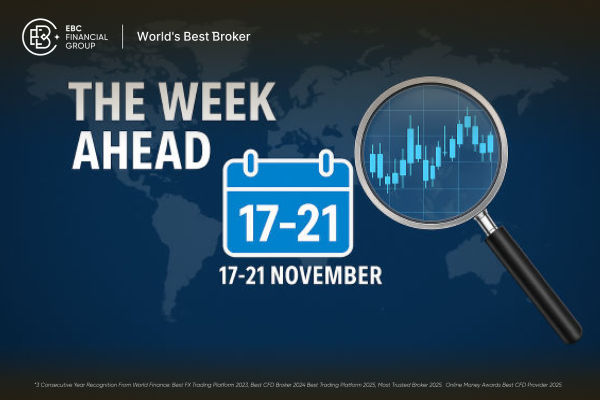The Federal Reserve Minutes due Wednesday at 2:00 PM ET will almost certainly reinforce expectations for an October rate cut, with markets already pricing a 96% probability of a 25-basis-point reduction to 3.75–4.00% at the 28–29 October meeting.
The document will offer the clearest view yet of policymakers' thinking on labour market risks and inflation progress at a time when the government shutdown has delayed critical jobs data that would normally guide the decision. [1]
Release Timing and Market Reaction

The FOMC Minutes from the September meeting will be published at exactly 2:00 PM ET (18:00 UTC) on Wednesday, 8 October. Historical data from the New York Federal Reserve shows that asset price volatility typically jumps to three times normal levels during the first hour after release, with two-year Treasury yields showing the sharpest reactions.
Most price discovery happens within the 2:00–3:00 PM window as algorithms and traders digest the text, meaning positioning ahead of the release is critical for active investors.
| Release Detail |
Data |
| Date and Time |
Wed, Oct 8 at 2:00 PM ET |
| Peak Volatility Window |
2:00–3:00 PM ET |
| Most Affected Asset |
2-year Treasury yields (3× normal volatility) |
| Typical Price Discovery |
First 15–60 minutes |
Fed Minutes Crucial Amid Shutdown
The shutdown has now furloughed roughly 750,000 federal workers daily and delayed several dozen economic releases, leaving the Fed and markets without the monthly jobs report, September CPI risk assessments, and key regional manufacturing surveys.
That data void makes Wednesday's minutes uniquely valuable, as they will reveal how Committee members assessed downside risks to employment back in mid-September and whether those concerns have intensified enough to justify back-to-back cuts. At the September gathering, Chair Jerome Powell emphasised "considerable uncertainty" and noted the dual mandate sides are "somewhat in tension," meaning officials must weigh cooling job growth against still-elevated inflation.
Three Key Signals Traders Watch
Professional investors focus on specific language patterns that signal dovish or hawkish leanings, following a structured approach to reading Fed communication. [2]
Labour market assessment: Look for phrases like "downside risks to employment had increased notably" (dovish) versus "labour market remains resilient" (hawkish). The September statement mentioned downside risks for the first time this cycle, and the minutes will show how many members shared that concern.
Inflation language shift: Watch for changes from "moderating" to "easing" when describing price pressures. If multiple participants noted that inflation is "approaching the 2% target" or "no longer a constraint," that supports October easing.
Neutral rate debate: Track consensus phrases like "most participants" versus division signals like "several participants" or "a few participants." The neutral rate—where policy neither stimulates nor restricts—will determine how far the Fed ultimately cuts.
Decoding Fed Minutes
Knowing what to scan for can save time and reveal consensus or division that the formal statement obscures.
Historical pattern analysis shows that when Fed minutes use language flagging "downside risks to employment," rate cuts have followed within 60 days in approximately 8 out of 10 instances over the past decade, making this phrase one of the most reliable dovish signals in FOMC communication.
Strong dovish signal: "Most participants judged that downside risks to employment had increased notably and agreed policy should be recalibrated to support labour market conditions."
Hawkish caution: "A few participants expressed concern about easing prematurely, noting that inflation remained above the Committee's 2% objective."
Division indicator: Look for dissents in the vote tally or phrases like "significant divisions on the Committee" or "split views on the pace of policy recalibration."
At September's meeting, one member—Stephen Miran—voted against the 25-basis-point cut, preferring no move at all. The minutes will explain his reasoning and whether others shared his hesitation, offering clues about internal tensions that could shape October's vote.
Key Fed Minutes Sections Explained
The document follows a seven-part structure that experienced readers navigate quickly.
| Section |
What It Reveals |
| 1. Monetary Policy Review |
Fed's framework and tool effectiveness |
| 2. Staff Economic Outlook |
Fed staff baseline forecast |
| 3. Financial Developments |
Credit conditions, lending standards |
| 4. International Outlook |
Global growth and trade risks |
| 5. Participants' Economic Views |
Member forecasts and risks |
| 6. Current Conditions |
Labour, inflation, and financial assessments |
| 7. Policy Action |
Vote tally, dissents, rationale |
Sections 6 and 7 typically drive the biggest market reactions, as they contain the freshest views on the economy and any cracks in consensus.
October Cut Odds: 96% and Rising
Fed Funds futures now show overwhelming conviction that the Fed will cut rates at the late-October meeting, with probabilities firming since the shutdown began.
| Meeting Date |
Cut Probability |
Projected Range |
| Oct 28–29 |
96–98% |
3.75–4.00% |
| Dec 17–18 |
88–90% |
3.50–3.75% |
Wall Street research houses are split on the path beyond October. Bank of America recently pulled forward its first cut forecast to October from December but now expects just one more move this year, citing over-easing risk. Goldman Sachs and Morgan Stanley, by contrast, anticipate cuts at both October and December meetings, pointing to sustained labour market softness.
Wednesday's minutes will test that divergence: broad agreement on further cuts would support December odds, whilst caution about moving too fast could temper expectations.
Shutdown Delays Fed's Key Data
The blackout has removed several pillars of the Fed's regular data diet, complicating both the October decision and market forecasting. [3]
Delayed releases:
September employment report (originally scheduled 3 October)
September CPI inflation data (risk of delay into late October)
Wholesale inventories, regional Fed manufacturing surveys
Powell has acknowledged the Committee will lean more heavily on private-sector indicators such as ADP payrolls, weekly initial jobless claims, and survey data from the Institute for Supply Management.
That reliance on proxies amplifies Wednesday's minutes, because they will show how much weight officials gave to softer August jobs numbers when they decided to cut in September.
Impact on Dollar, Gold, and Stocks
A dovish tilt in the minutes would ripple across asset classes within minutes of the 2:00 PM release.
U.S. dollar: Likely weakens, with USD/JPY vulnerable to a test of 147.00 as rate-cut expectations rise and the yen benefits from haven flows.
Gold: Record levels above $3,930 per ounce would extend if the minutes confirm an easing bias, as lower real rates reduce the opportunity cost of holding the metal.
Equities: The S&P 500's seven-day winning streak could continue if cuts are signalled, lifting rate-sensitive sectors such as real estate and utilities, though a cautious tone risks profit-taking.
Treasuries: Two-year yields would likely fall 5–8 basis points on dovish language, whilst ten-year yields could steepen if markets price sustained easing into 2026.
Two Risks to October Rate Cut

Despite near-unanimous market conviction, two scenarios could derail the October easing consensus.
Shutdown ends and jobs data surprise: If Congress reaches a funding deal this week and the delayed September employment report shows unexpectedly strong payroll growth above 200,000 with falling unemployment, the Fed may pause to reassess labour market momentum.
Inflation rebounds: Should the October CPI release (if it proceeds on schedule) reveal core inflation reaccelerating above 3.0% year-on-year, policymakers may choose to hold rates steady and gather more evidence before resuming cuts.
Bank of America has specifically warned of "over-easing risk," arguing that aggressive cuts into a still-resilient economy could reignite inflation expectations and force an awkward policy reversal in 2026.
Conclusion
Wednesday's Fed Minutes arrive at a pivotal moment when markets are pricing near-certainty of an October cut but lack the usual data to confirm that view. With the government shutdown delaying key releases and volatility poised to spike at 2:00 PM ET, the minutes will serve as the single most important policy signal before the 28–29 October decision.
History shows that when the Fed flags "downside risks to employment" in minutes, cuts follow 80% of the time within two months, making Wednesday's language on labour markets the critical tell.
Disclaimer: This material is for general information purposes only and is not intended as (and should not be considered to be) financial, investment, or other advice on which reliance should be placed. No opinion given in the material constitutes a recommendation by EBC or the author that any particular investment, security, transaction, or investment strategy is suitable for any specific person.
Sources
[1] https://www.schwab.com/learn/story/how-to-effectively-read-federal-reserve-minutes
[3] <a rel="nofollow" target="_blank” href="https://www.reuters.com/world/us/us-government-shutdown-how-it-affects-key-economic-data-publishing-2025-10-06/" style="text-decoration: underline; font-family: arial, helvetica, sans-serif; font-size: 16px;">https://www.reuters.com/world/us/us-government-shutdown-how-it-affects-key-economic-data-publishing-2025-10-06/























